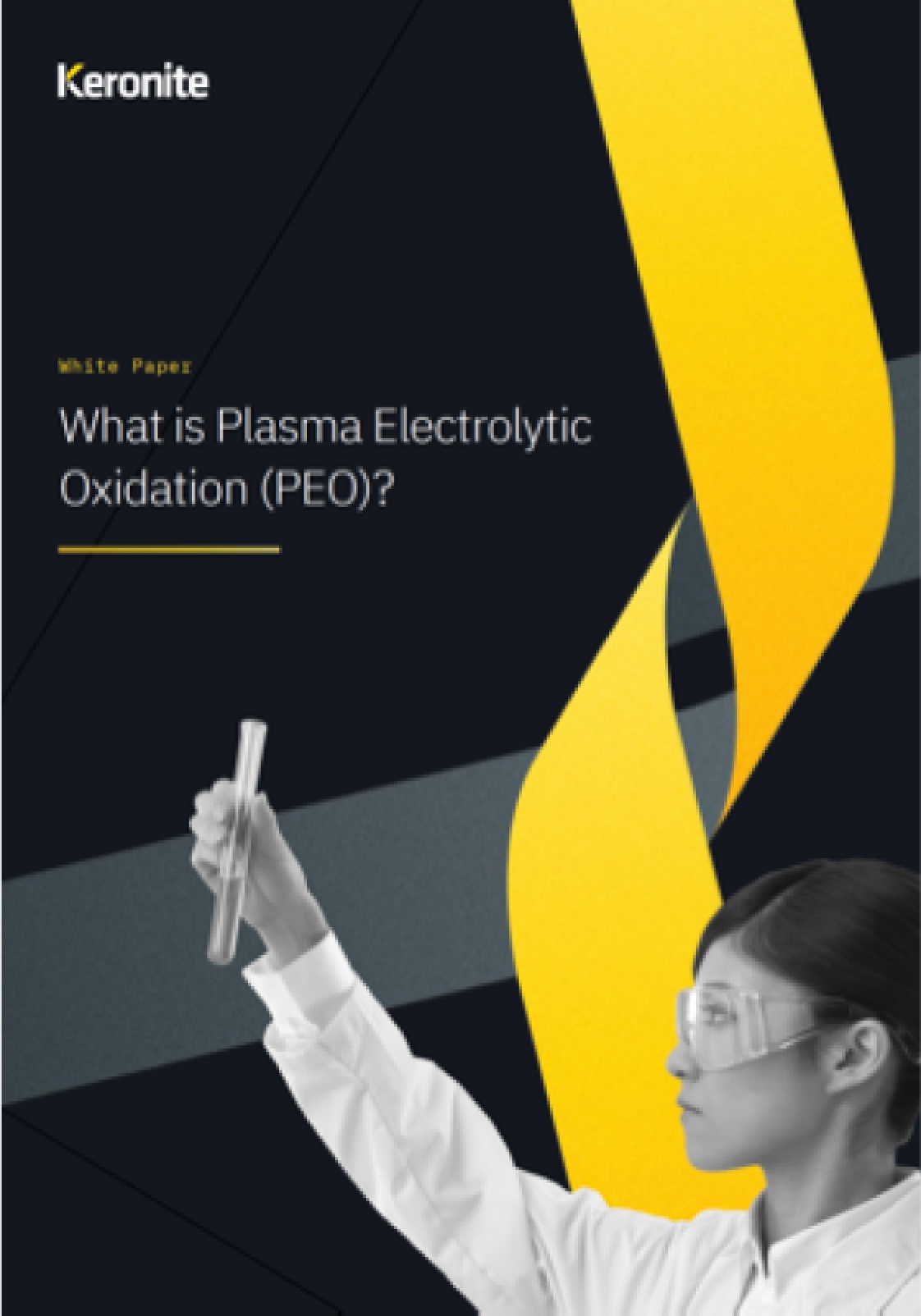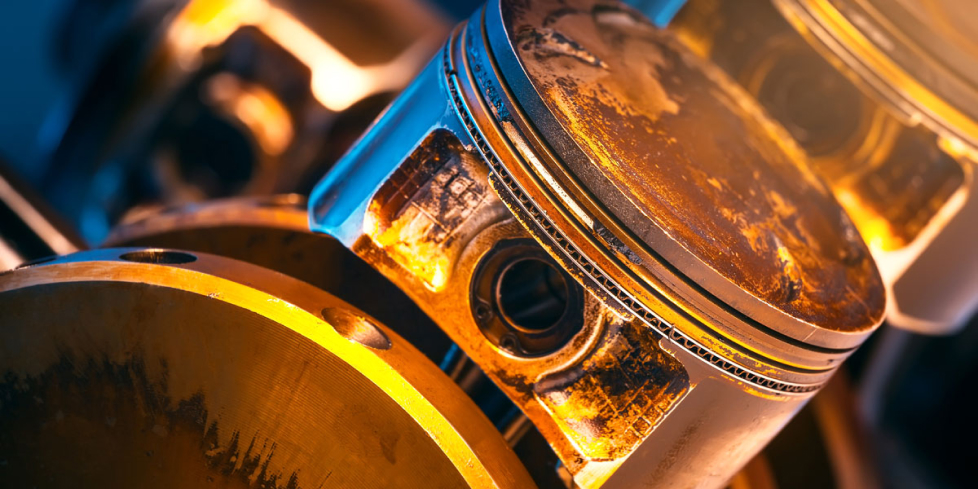PEO’s unique pore structure acts as a highly adhesive key and allows for a second sealer layer to be applied, forming a duplex coating that combines the specific benefits of each to create a superior overall finish.
Your browser is not supported.
The latest version of Safari, Chrome, Firefox, Internet Explorer or Microsoft Edge is required to use this website.
Click the button below to update and we look forward to seeing you soon.
Update now

In aerospace, fuel is a major expense. Whether that’s for a space launch or a passenger flight, lighter components reduce the cost per journey and maximise the total weight dedicated to passengers, their luggage, or energy-saving and safety equipment.
Electric cars require batteries: which are much more dense than gasoline. Heavier cars require more energy to move, consuming more power and reducing the range of a vehicle.

When specifying components and designing machinery, equipment or vehicles, engineers are always mindful of the need to minimise weight and optimise lifespan. Lighter, longer lasting components bring a number of benefits over the life of a project:
Of course, Every project design requires careful consideration of how each part contributes to overall size, weight, power and cost calculations. Selecting lighter metals can mean compromising on corrosion resistance, which in turn increases downtime and maintenance costs and reduces the lifespan of components. Light metals require surface treatment in order to make them fully fit for purpose.
Opening up the potential of lighter metals for use across a wide range of industries and applications, advanced surface technologies offer a means to improve the corrosion performance of component parts, while also introducing other beneficial, unique characteristics for the application at hand. Keronite’s unique Plasma Electrolytic Oxidation (PEO) process is one such innovation, producing hard, dense and ceramic coatings suitable for use on many light alloys.
PEO surface coatings are characterised by their wear resistance, corrosion resistance and thermal and chemical stability, making them attractive to engineers looking to maximise the life of components.
Plasma electrolytic oxidation is a bath-based method of producing ceramic layers on the surface of light alloys. The process is suitable for alloys of high aluminium, magnesium and titanium composition, along with zirconium, tantalum, niobium, hafnium and cobalt. PEO’s two-stage method strengthens and seals the surface of metal alloys through:
Oxidation of the substrate in a bath of proprietary dilute aqueous solution
Plasma modification, altering the microstructure to improve corrosion resistance and fatigue strength


PEO’s unique pore structure acts as a highly adhesive key and allows for a second sealer layer to be applied, forming a duplex coating that combines the specific benefits of each to create a superior overall finish.
In addition to making treated components lighter and longer lasting, the PEO process also delivers many practical benefits that greatly enhance the appeal of magnesium alloys for engineers working across a wide range of industries:

Through a combination of high hardness, strong adhesion and compliance, PEO delivers a complete wear resistant solution for components that is particularly effective against dry-sliding. Dry sliding is one of aviation’s most common surface technology challenges, with moving parts prone to failure and having major implications for repair costs and maintenance schedules.
PEO’s inert ceramic structure provides excellent natural chemical stability and corrosion protection. They work best as pre-treatments, with sealers, paints and other polymers applied on top. Single layer coatings can survive up to 648 hrs (alloy dependent) whereas Duplex layer coatings have exceeded 1800 hrs in Neutral Salt fog testing (ASTM B117).
With a density of 1.7g/cm3, pure magnesium is the lightest structural metal available. Its alloys are therefore ideal for projects where weight is a key concern, giving a weight advantage over aluminium of 33%, and as much as 50% over titanium. Magnesium alloys typically have densities of 1.33 – 2.4g/cm3
PEO delivers up to 2000HV of hardness on aluminium, outperforming steels in pin-on-disc tests. These extreme levels of hardness are achieved through a combination of crystallisation of oxides and co-deposition of elements from the electrolyte in the ceramic layer. PEO coatings are made with phase corundum, one of the world’s hardest natural elements.
Plasma electrolytic oxidation is a conversion process, which means the layer is formed from the substrate, providing exceptional adhesion and excellent coverage. The porosity of the coating enables PEO to act as a highly adhesive ‘key’ for a variety of sealing materials and duplex coatings. This means that, in addition to high levels of corrosion resistance, wear resistance and hardness, PEO coatings can incorporate other properties such as high dielectric breakdown strength and anti-microbial traits.
Keronite’s scientists can optimise coatings by tightly controlling PEO processing parameters to create bespoke solutions. Resultant component coatings are thus fully customisable, which means that by working with engineers from a very early stage of the project, we can create a coating that hits every aspect of the brief and enhances both material and project performance.
Keronite’s material scientists have created bespoke coatings for thermal transmission (0.8 – 10 W m-1 k-1) and thermal barrier (up to 950℃) applications. PEO’s versatility means that specific solutions can be created to meet the thermal management requirements of any project.
PEO delivers ultra-precise coatings, with coating thickness starting at just 1μm. PEO’s layer structure and irregular pore structure aids fatigue performance, which means material can be removed to save additional weight.

Working with a consortium of academics and automotive engineers, PEO-coated pistons were tested in single-cylinder engines. Project data proved a significant efficiency benefit is delivered using thermal swing coatings. PEO coatings display very low conductivity and heat capacity, thus improving engine thermodynamics.
Download the keynote presentationVia our world-class ISO9001 and AS9100 certified technology and manufacturing facilities in the UK & USA.
To optimise your solution, we lease you equipment and licence technology, supporting your facility build, and supplying you electrolyte and other consumables.
We invest in a factory gate solution, creating a facility alongside your factory to reduce physical supply chains and facilitate efficient knowledge sharing.
Our world-class team has expanded by more that 25% over the past year
We’ve invested more than £1m in new technology over the past 12 months
We’ve processed over 100,000 individual components this past year
We’ve installed four brand new PEO production lines this year
Plasma Electrolytic Oxidation is already being used across a wide range of industries and applications for light weighting components and increasing their lifespan. Our team would be happy to discuss its suitability for your projects, and answer any questions you may have.
Get in touch